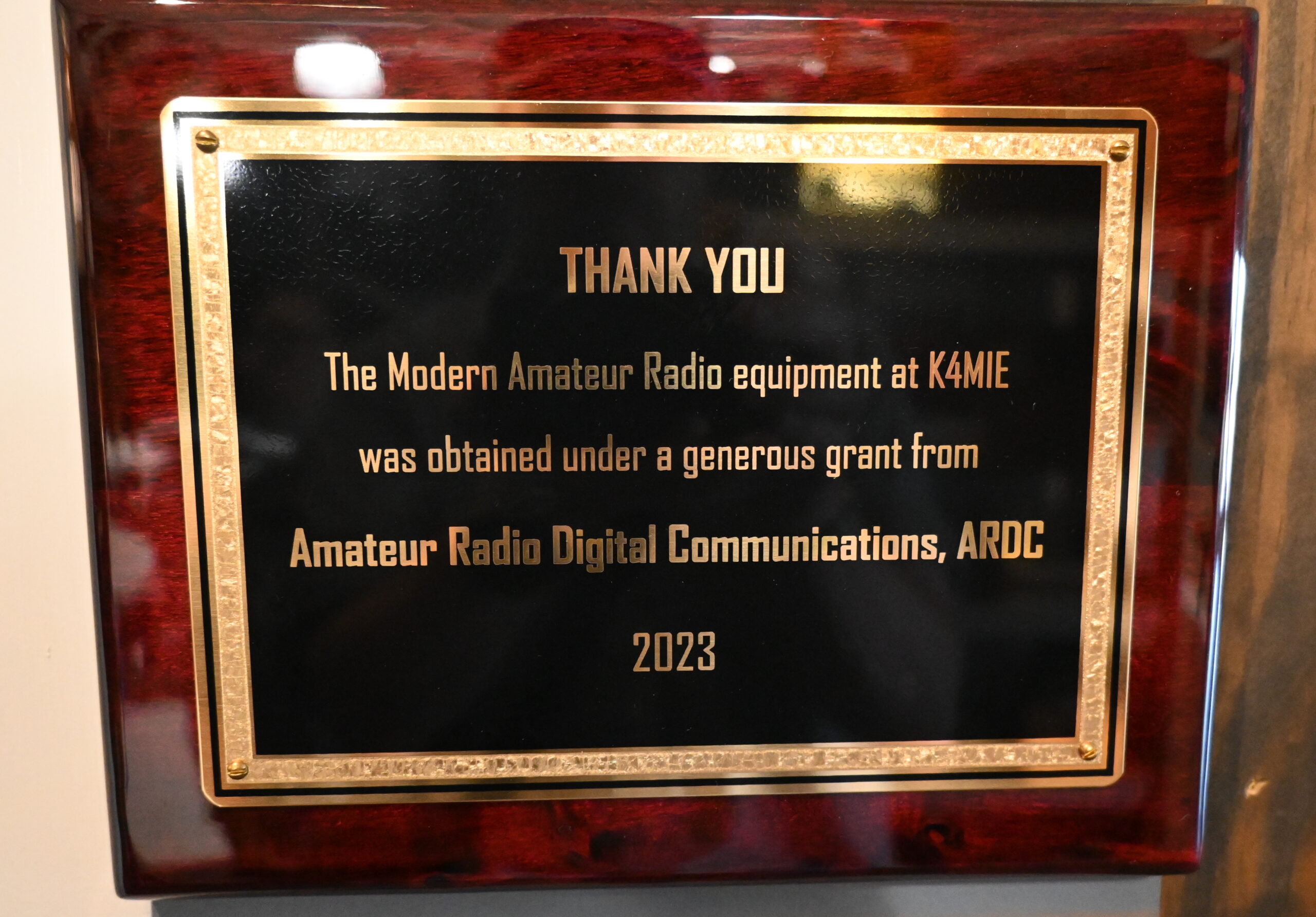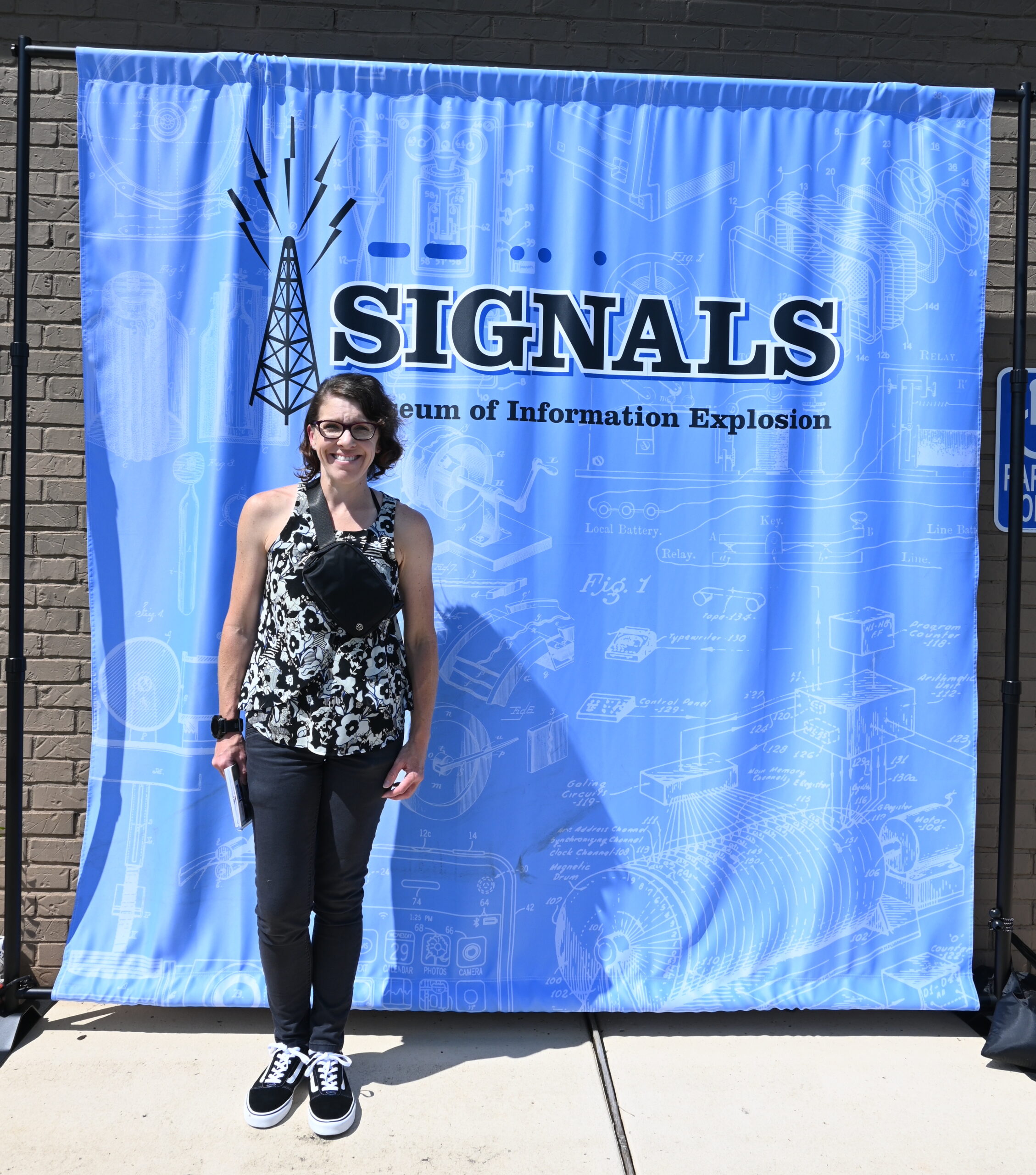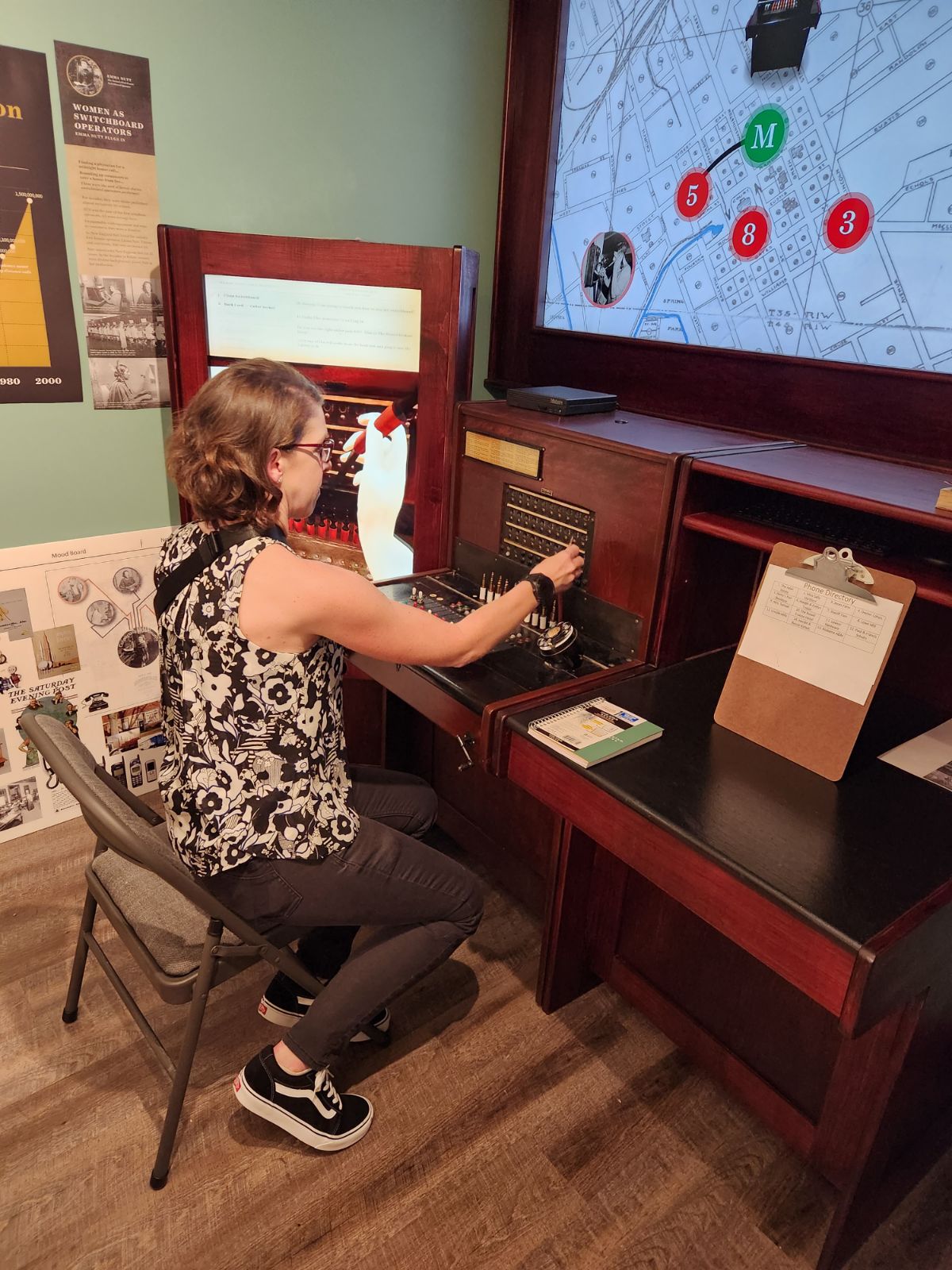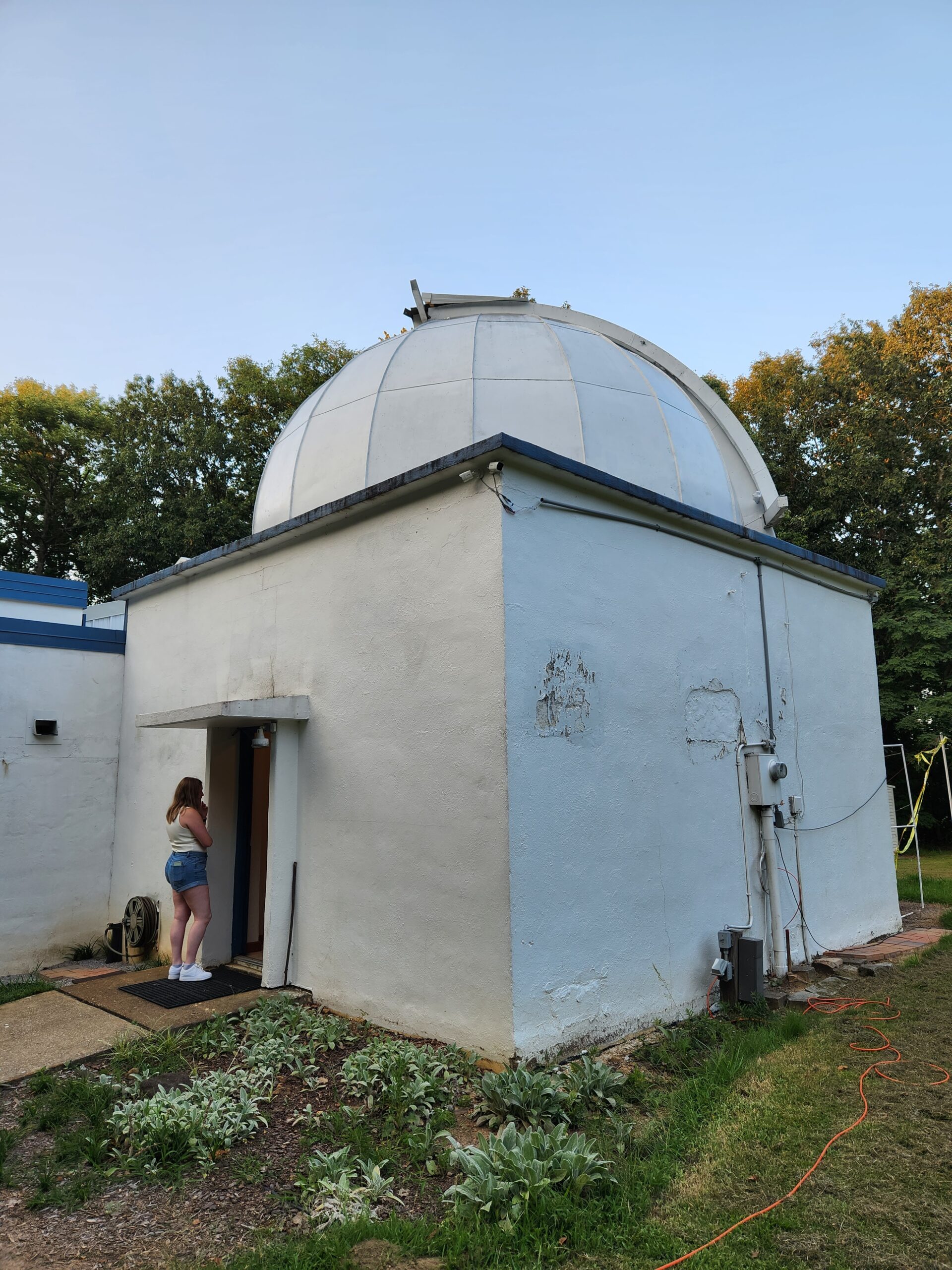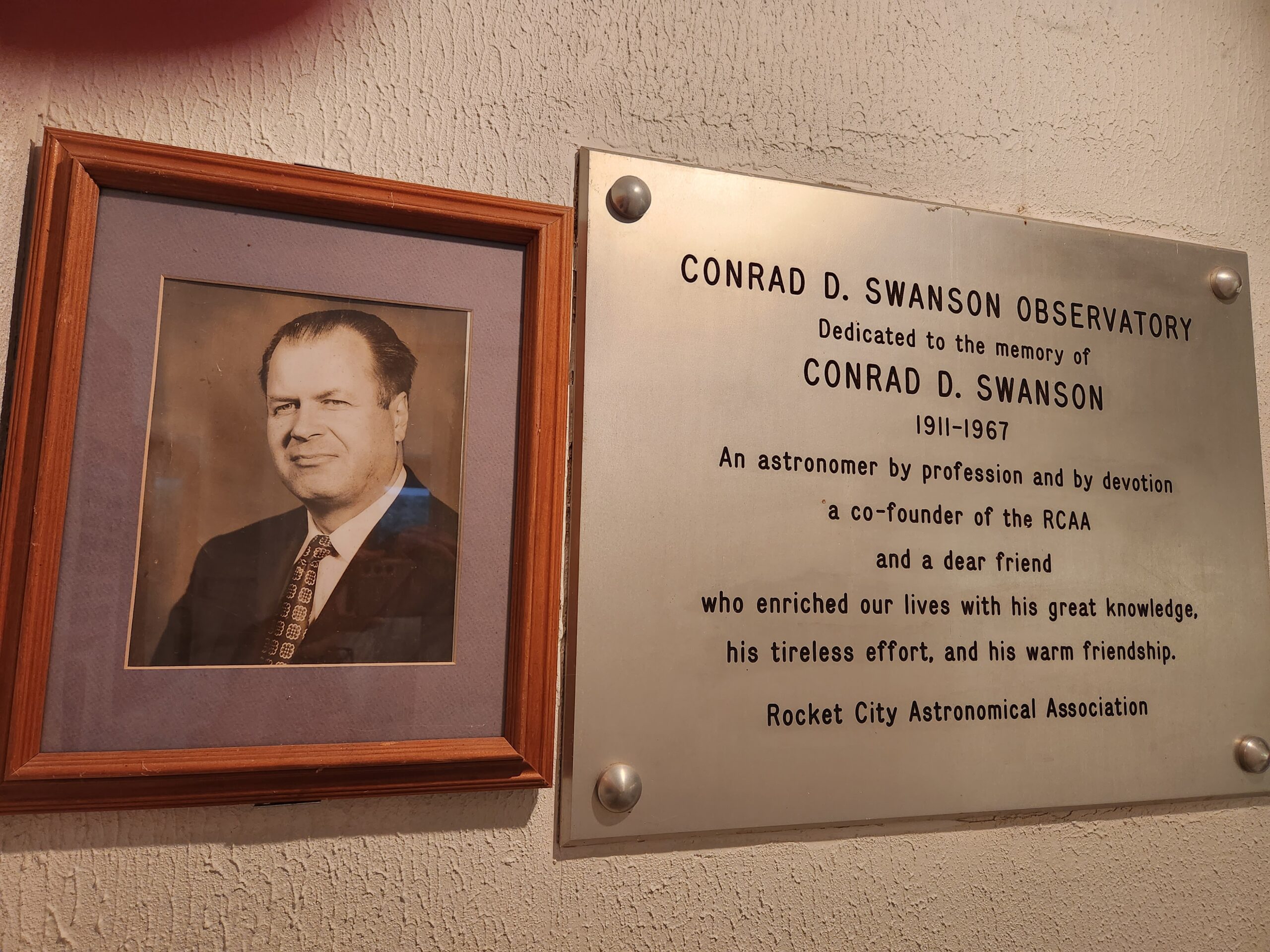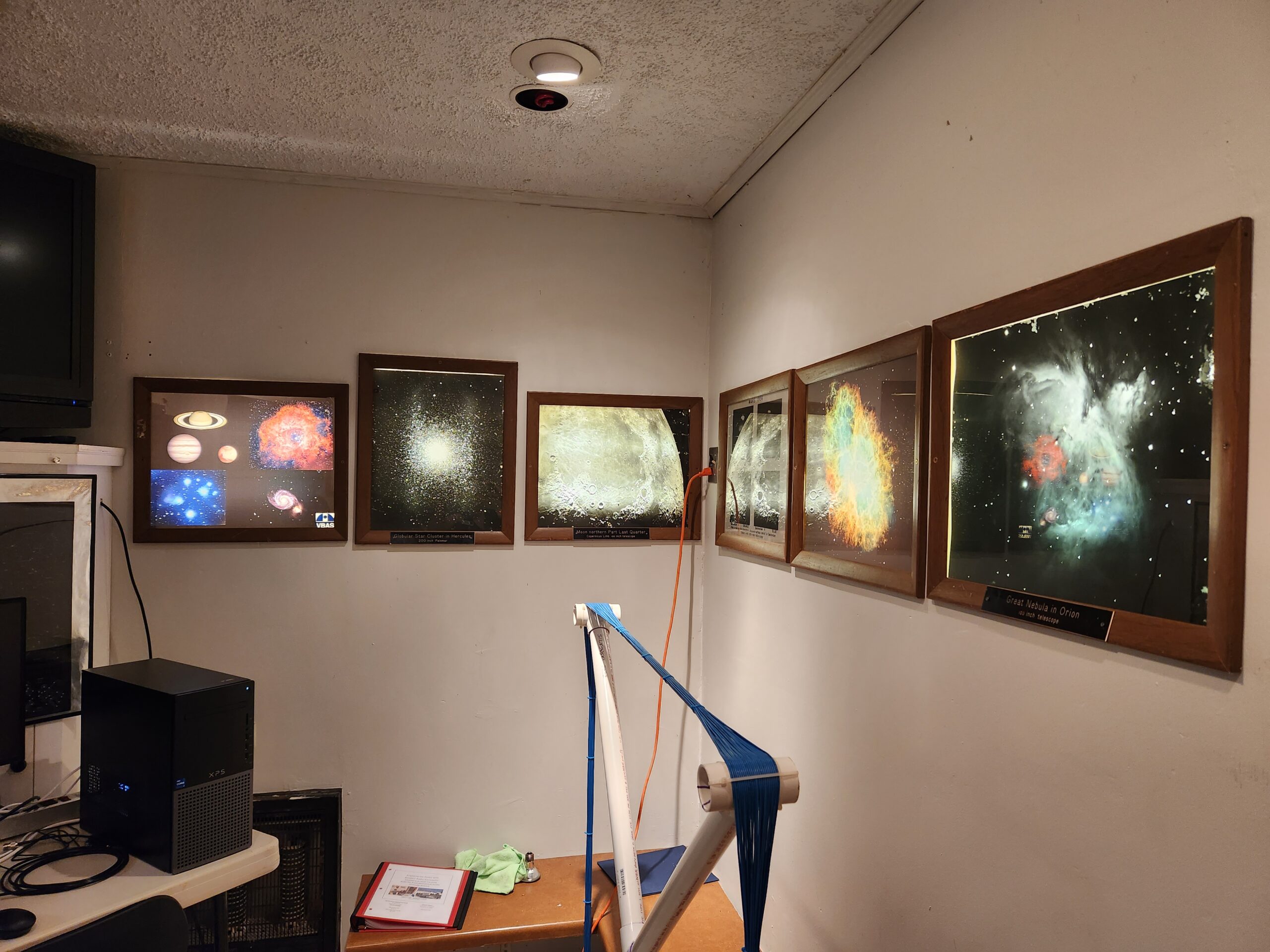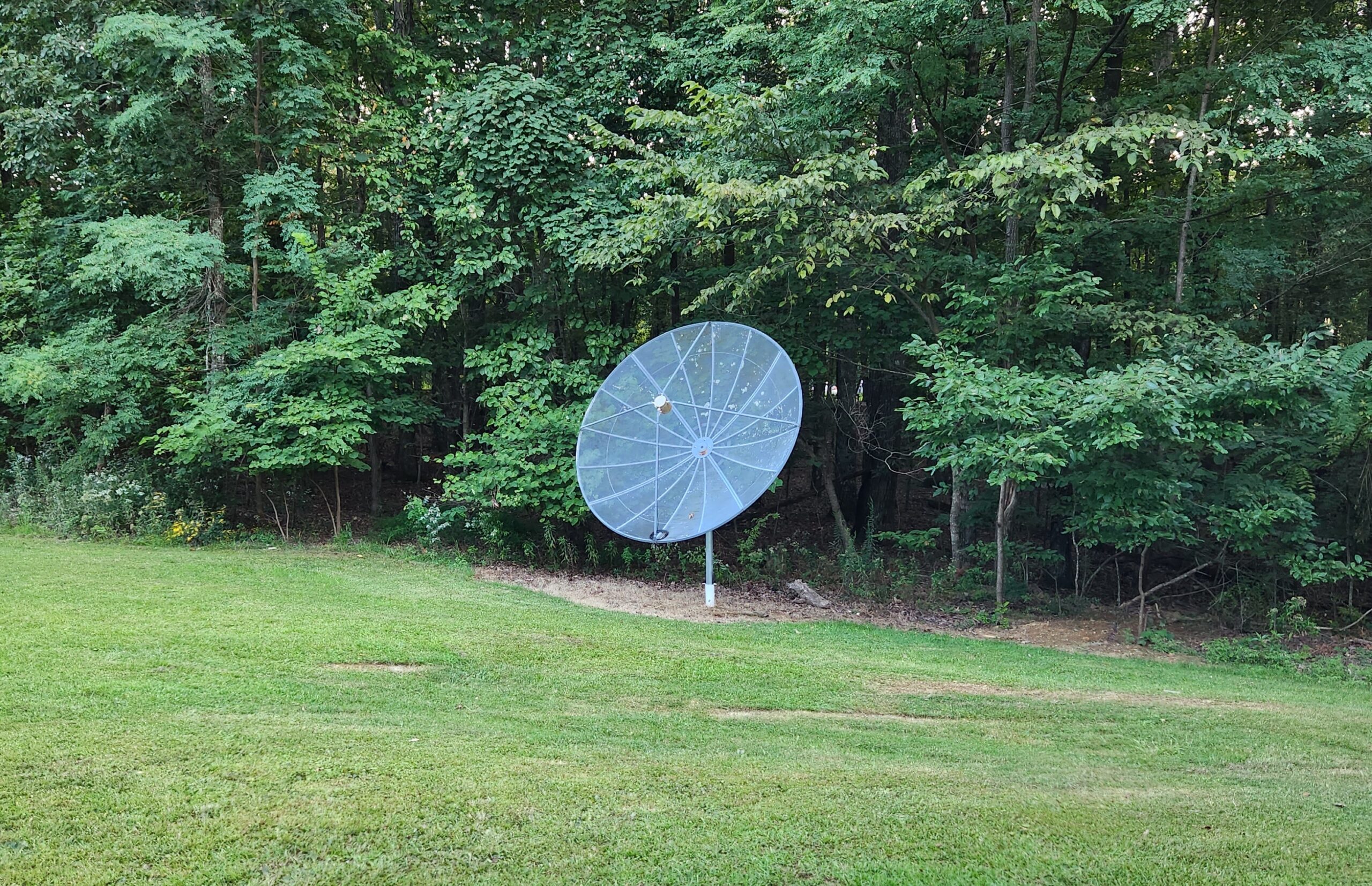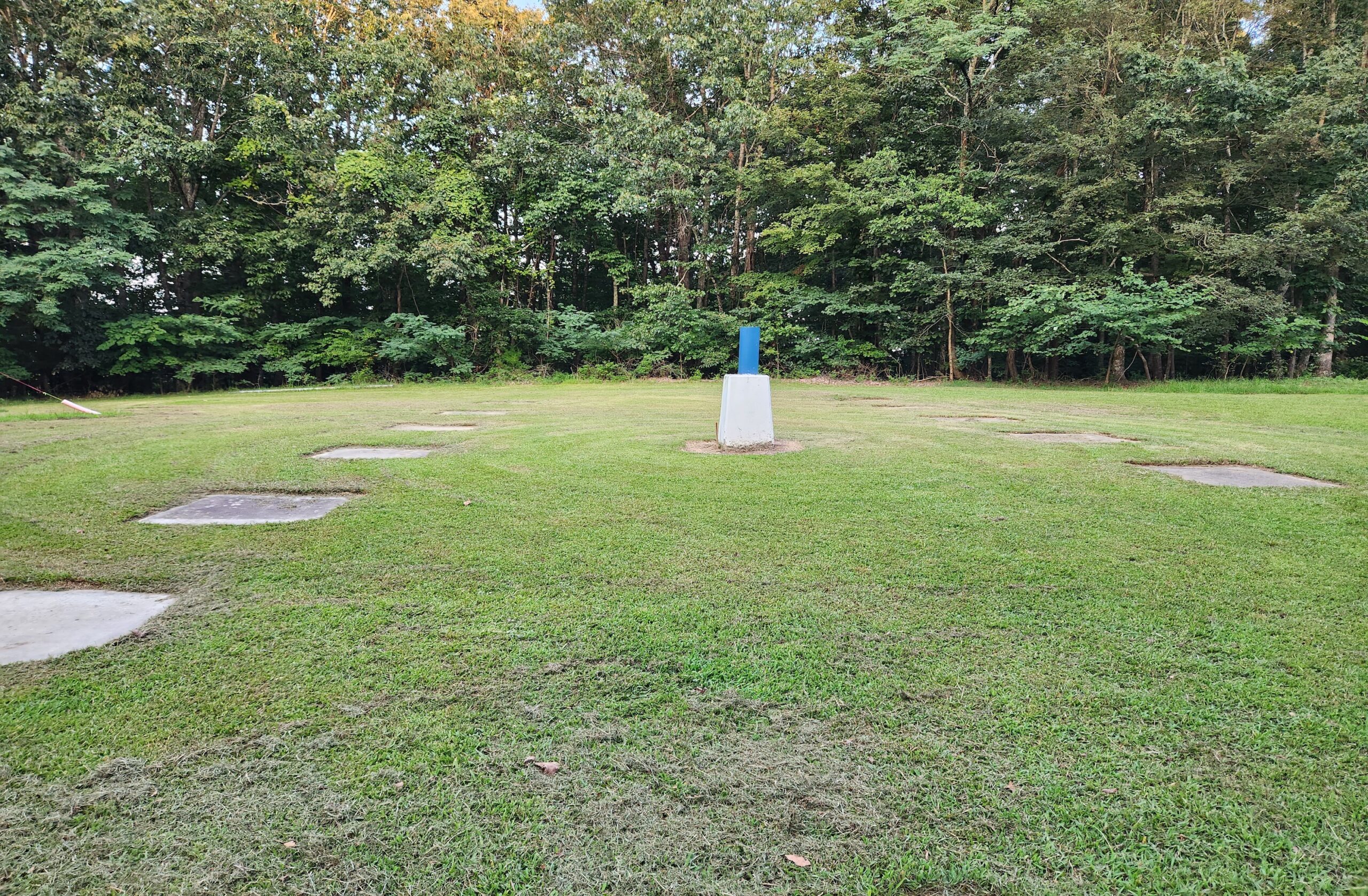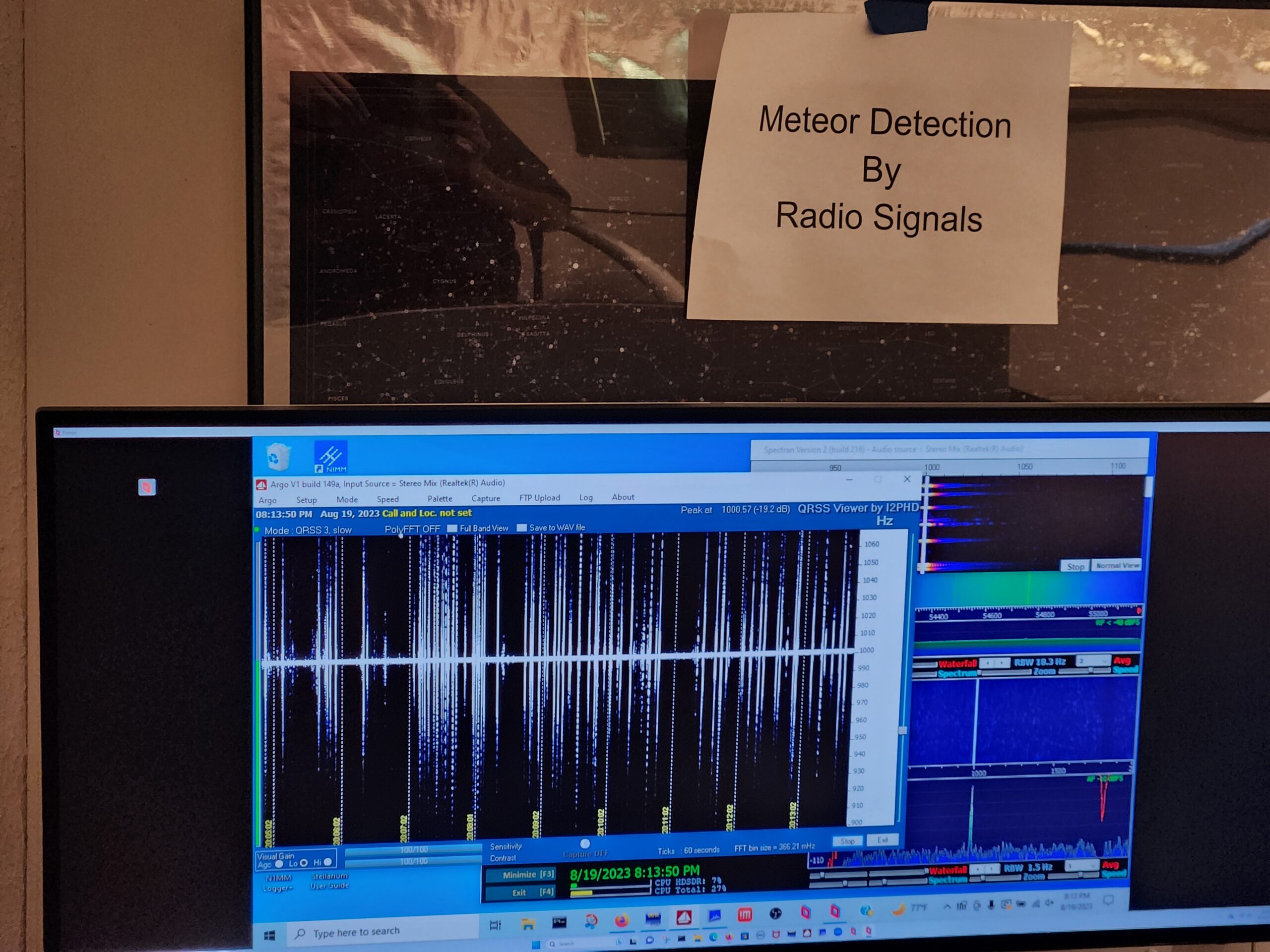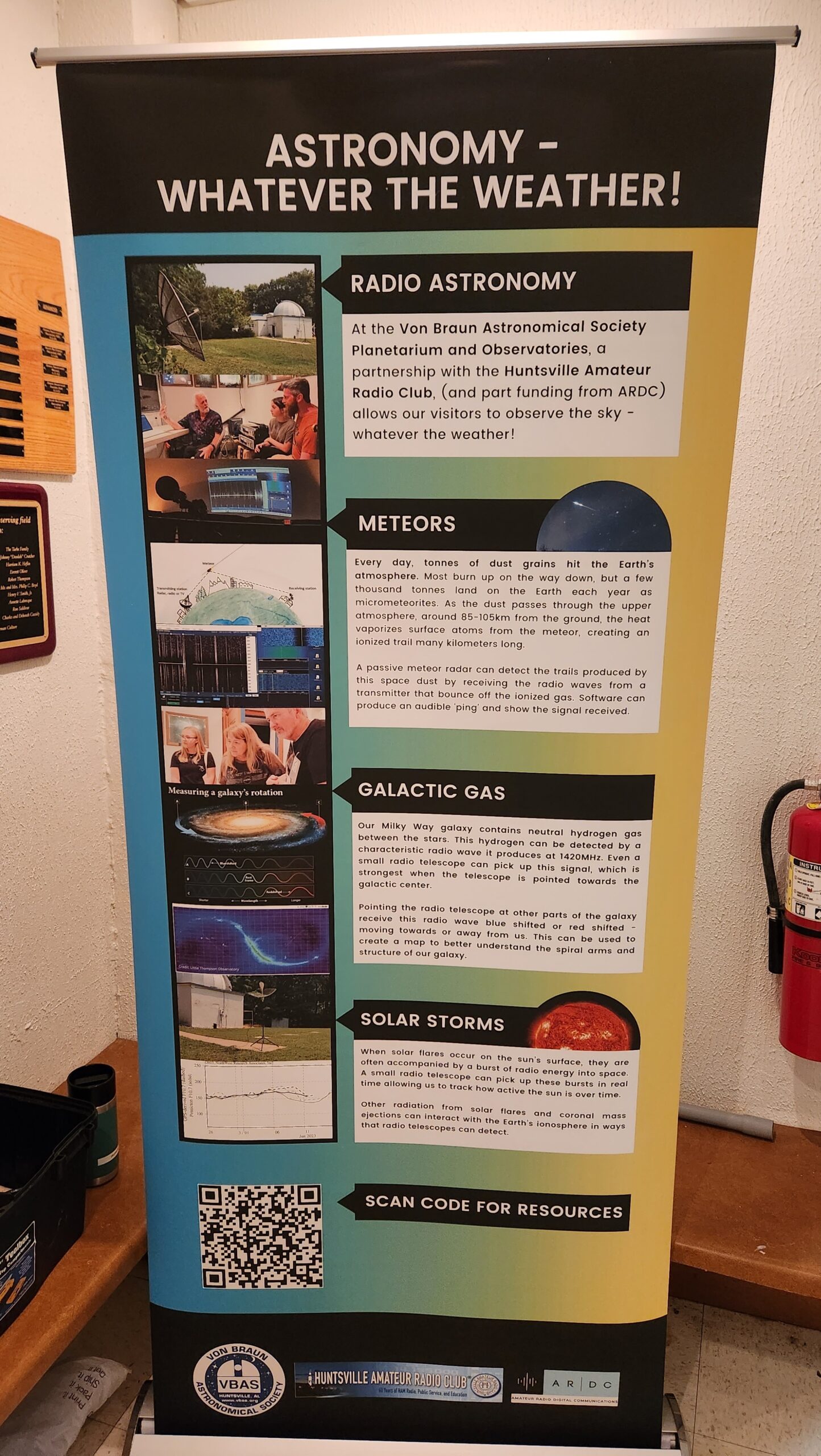Grantee Update: Visiting the SIGNALS Museum and the VBAS Planetarium and Observatories
The Huntsville Hamfest, also known as ‘The World’s Friendliest Hamfest’, occurs in August of each year in Huntsville, AL. With this Hamfest – or any Hamfest for that matter – you can be sure to find an adjacent event that will pique your interest. This year, I (Rebecca, KO4KVG) experienced exactly that in Huntsville! SIGNALS: Museum of Information Explosion, expected to open in 2024, celebrates the history and evolution of communication technology. Funded by a grant from ARDC, they have made progress toward procuring, installing, and operating state-of-the-art equipment to supplement their historic and classic analog gear. This funding also included making upgrades to K4MIE, the museum’s ham shack.
On the Friday before the Hamfest, Dr. Marcus ‘Marc’ Bendickson, Executive Director of SIGNALS, opened the doors for a sneak peek tour of the museum. As I was within driving distance of Huntsville, I was able to easily update my travel schedule and get a ticket for the tour.
Previewing SIGNALS Museum
Before the tour began, I had the opportunity to check out the K4MIE ham shack, maintained by the Radio Club of the Museum of Information Explosion (MIE). K4MIE showcases live demos of familiar technologies, such as Winlink and FlexRadio, providing fellow amateur radio operators with a close-up look at these communication tools in action. A special thank you to Bob Ehresman (KV4PC) and Bob De Pierre (K8KI), radio club President and museum volunteer, respectively, for performing these demos!
Upon leaving K4MIE, I headed to the museum lobby, where Marc began the tour by showing us some vintage radios. Leaving the lobby, we quickly noticed the abundance of interactive displays, including an animated Ben Franklin with his kite alongside a physical exhibit of electricity’s role in communication.
After leaving Ben and his kite behind, we were then taken to the room celebrating Morse code. There, a wall showcased keys through the ages. The space also features a hands-on exhibit that lets visitors try their hand at CW. If you enjoy playing Guitar Hero, this exhibit is for you.
Plan to catch a wave of nostalgia when you see the room dedicated to the history of telephones. The sight of a pay phone booth and rotary dial telephone might take you back to a time when these devices were everyday essentials. The telephone room also features an interactive switchboard exhibit that’s a lot of fun to operate. If you get the chance to work the switchboard, tell Marbelle I said hello!
Next, we arrived at a room dedicated to the evolution of music-listening devices. Though I’ve never used a phonograph or a 1920’s radio, seeing record players, cassette tape decks, and 45 records definitely brought back some childhood memories. This room even includes a retail counter with phonograph supplies, adding a unique touch to the experience.
The tour concluded in a room full of televisions and teletypes. Though I’ve never used a teletype, seeing console TVs took me back to my childhood yet again, where I would walk up to the TV and turn a dial to change the channel – no remote required.
SIGNALS has done a great job of preserving the history of communication technologies. Whether you’ve used some of these devices yourself, seen them at a relative’s house, or heard family stories that include them – like the one of my grandfather using a party line telephone system as a kid – SIGNALS is a true trip down memory lane. If you find yourself in Huntsville next summer, plan a visit to the museum: you’ll be glad you did.
VBAS Radio Astronomy Project
In addition to visiting SIGNALS, I also got to visit Monte Santo State Park, which is the site of the Von Braun Astronomical Society (VBAS) planetarium and observatories. Many of the SIGNALS grantees are also our VBAS grantees (VBAS Radio Astronomy Project), so I received an invitation to the park to check out some of the work they are doing! VBAS was awarded an ARDC grant to establish an onsite amateur radio astronomy program, aimed to include a comprehensive setup for meteor detection and interpretation, as well other tools needed for radio astronomy and geophysics exploration. Additionally, funding was sought for the establishment of an outreach program to get people interested and involved in radio astronomy.
Upon arriving at the planetarium, we were greeted by Alex Hall, the Development Director and Director of Education and Programs at VBAS. Before the planetarium show, Alex gave us a quick tour of the Swanson Observatory, which houses their radio astronomy workstation. She also showed us the field outside of the Observatory, which contains a satellite dish and also has landing pads for people to set up telescopes.
During the tour, we learned that the planetarium dome is made from the material that was used in building a mockup of the Saturn V moon rocket, which is a great piece of trivia. The planetarium show, Space and Space Junk, was led by former VBAS President Beth Bero (KQ4JAI), a retired educator and current VBAS presenter. She did an outstanding job of opening my eyes to what is really out there in space floating around – including old satellites, CubeSats, fragments of old spacecraft, among other debris.
Following the planetarium show, we went back to the Swanson Observatory. There, Bob (KV4PC) the Radio Astronomy Coordinator at VBAS (in addition to being President of the Radio Club of the MIE), gave us a demo of their meteor detection radar, which through NoMachine or Parsec, can be projected onto the dome of the planetarium at the end of a show.
No matter the weather conditions, this demo always has something neat to show the planetarium visitors.
I really enjoyed the opportunity to visit SIGNALS and VBAS and meet some of our grantees in person. The excitement over presenting their work and the gratitude of receiving funding to do the research that matters to them was truly amazing. With SIGNALS expected to open in 2024, this venue promises to be a hub for the history and discovery of communication technologies and beyond. For those interested in learning more about SIGNALS and staying up-to-date on information as they approach their grand opening, be sure to bookmark their website. If you’re interested in radio astronomy and find yourself in the Huntsville area, check out a planetarium show at VBAS and stick around afterward for the meteor detection demo. I look forward to meeting many more of our grantees in the not-too-distant future. Until then, 73!
